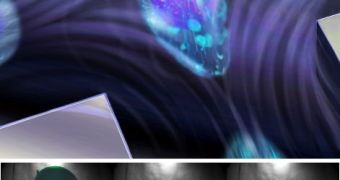Investigators at the University of California in Los Angeles (UCLA) have created a device that can slam cells into a wall of fluid. By analyzing how the cells deform, the instrument can then extrapolate data on the properties of membranes, the internal structure, and the arrangement of DNA within.
The team presented an analogy between how this system works and what happens when you throw a balloon filled with water into a wall, as opposed to the same balloon containing honey. In each instance, the object will deform in different patterns, just like cells do.
Learning about the mechanical properties of cells can come in handy when investigating diseases such as cancer. Any breakthrough in collecting data about how tumor cells react to their environment could lead to the development of effective therapies.
The viscous and elastic properties of cells can reveal data about organelles (structural elements within), how their membranes are set up, and how the DNA is arranged within their nuclei. Each of these factors influences how the cell reacts to mechanical deformations.
In addition, they also change depending on the state of activity the cell displays. In numerous diseases, cellular activity patterns differ considerably from normal ones. Using their new deformability cytometer device, the UCLA investigators can analyze these factors in detail.
UCLA biomedical engineering PhD students Daniel Gossett and Henry Tse worked together with assistant professor of bioengineering Dino Di Carlo for this research. Their instrument includes a microfluidic chip that is responsible for sequentially aligning cells in a certain formation.
This makes it easier for them to hit a wall of fluid at high rate – thousands of cellular impacts each second. The team also developed an extremely advanced camera that can image the collisions at a rate of 140,000 frames per second, providing the necessary rate for accurate, relevant studies.
“Our system makes use of an approach that (US Secretary of Energy) Steven Chu used to stretch DNA to, instead, stretch cells,” Di Carlo explains. He adds that it takes 10 to 30 minutes to analyze thousands of cells using the deformability cytometer device.
“This required us to engineer the fluid dynamics of the system such that cells always entered the stretching flow in the same place, making use of inertial focusing technology my group has been pioneering,” he concludes.
The investigation was funded by the US Defense Advanced Research Projects Agency (DARPA) and a Packard Foundation Fellowship for Science and Engineering.

 14 DAY TRIAL //
14 DAY TRIAL //